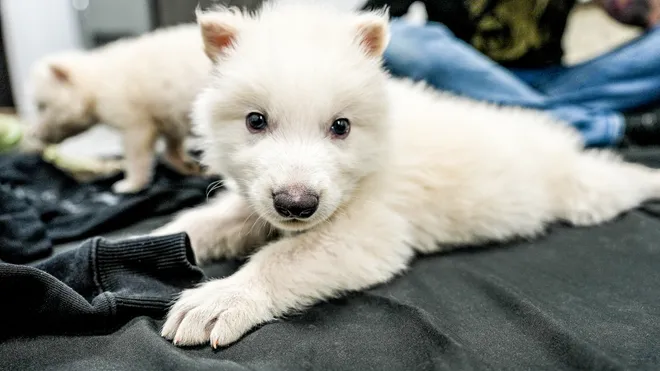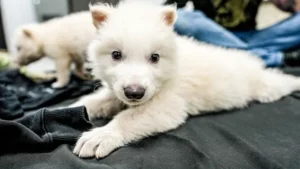Dire Wolves Are Back After 10,000 Years—What Does It Mean for Us and the Planet?
In a breakthrough that feels straight out of a science fiction movie, researchers at Colossal Biosciences, a Dallas-based biotech startup, have successfully revived the once-extinct dire wolf—a legendary predator that vanished more than 10,000 years ago. Using cutting-edge de-extinction technology, three genetically engineered dire wolf pups are now alive and active at a secret location in the United States.
This unprecedented scientific achievement raises not only excitement but also ethical and ecological questions. Are we ready for a world where extinct species return?
How Did Scientists Bring Back Dire Wolves?
The process of de-extinction used by Colossal Biosciences is a mix of ancient DNA extraction, CRISPR gene editing, and advanced cloning techniques.
The researchers started by analyzing ancient DNA samples from 13,000-year-old teeth found in Ohio and a 72,000-year-old skull fragment from Idaho. This data helped identify key genetic traits of the dire wolf, which were then spliced into the DNA of the gray wolf—its closest living relative.
Using CRISPR, they edited over 20 specific gene sites, and the modified DNA was implanted into egg cells. These were later transferred into surrogate mothers—domestic dogs. After a 62-day gestation period, three dire wolf pups were born, marking a historic moment in genetic science.
What Exactly Is DNA Cloning?
According to the National Library of Medicine, DNA cloning involves selecting a specific DNA sequence from millions within a cell and producing it in pure form. It enables researchers to replicate ancient or rare genes, like those from extinct species, in large quantities—essential for de-extinction efforts.
What Makes These Dire Wolves Different?
While these animals look and behave like dire wolves, they are not 100% genetically identical to the ancient species. Without the presence of real dire wolf parents or a wild ecosystem, they will miss critical social learning and behavioral traits passed down in the wild.
Still, Colossal’s chief scientist Beth Shapiro noted that these pups closely resemble the prehistoric wolves in size, strength, and appearance.
What Are the Implications of Bringing Back Extinct Species?
Wildlife experts, including Christopher Preston from the University of Montana, caution that this milestone opens doors to both innovation and unintended consequences. While the technology offers hope for conservation of endangered species like the red wolf or northern white rhino, reintroducing long-extinct animals to the wild could disrupt modern ecosystems.
“It’s hard to imagine dire wolves ever being released and taking up an ecological role. We must ask what role these new animals will serve,” Preston said in an interview.
Social Media Reacts: Elon Musk and AI Grok Chime In
The news quickly lit up the internet. Billionaire entrepreneur Elon Musk shared a fictional TIME Magazine cover featuring one of the dire wolves, named Remus. His AI chatbot, Grok, responded to a user’s question about the risks, warning of possible “ecological chaos” and “ethical dilemmas.”
“Nature’s not a sci-fi playground,” Grok cautioned. “Plenty could go wrong—reintroducing a species gone for 10,000 years comes with risks.”
What’s Next? Is This the Future of Conservation?
For now, the dire wolves will remain in captivity, with researchers studying their behavior, health, and interaction. But Colossal Biosciences insists this is just the beginning of their “de-extinction pipeline”, which may one day be used to rescue critically endangered species.
While it’s still unclear whether dire wolves or other revived species will ever be released into the wild, this moment marks a major step forward in genetic science, conservation biology, and our relationship with nature.











Post Comment